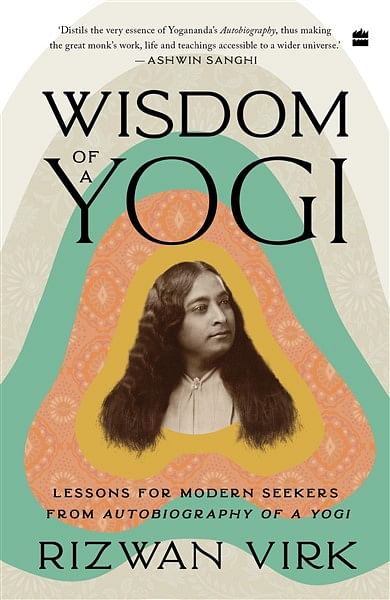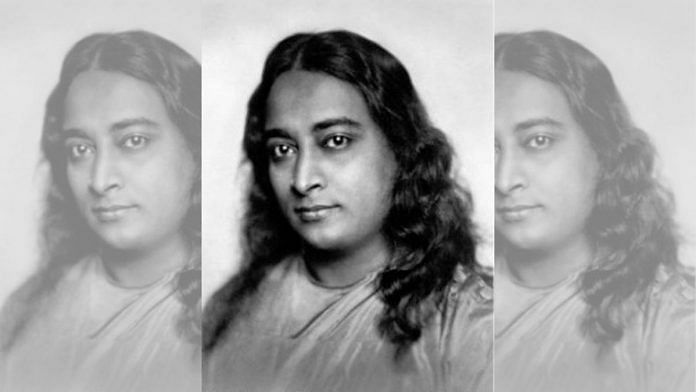East is East and West is West, and never shall the twain meet; wrote Rudyard Kipling, whom I quoted in the introduction to this book. Yet, by the time that Yogananda arrived in the US in 1920, the enormous gulf between the two parts of the world had already been narrowed. The pervasive influence of the British Empire, the age of colonialism, not to mention some of America’s greatest nineteenth-century philosophers like Ralph Waldo Emerson, had made sure that the West was not a complete stranger to ancient Indian philosophy.
Towards the end of the nineteenth century, Swami Vivekananda had travelled to America and lectured all around the country, becoming one of the first Indian swamis to gain popularity there. Swami Vivekananda didn’t, however, live and settle in the West as Yogananda did; he returned to India after his tour, which was considered a great success.
Still, despite the occasional bridge between the cultures, we might say that a big chasm continued to exist between the two countries when Yogananda arrived. Most ordinary Americans knew little about India or yoga, other than rumours and caricatures of swamis and yogis. Yet the interest in Yogananda’s lectures throughout the country, evidenced by his many sold-out appearances at theatres across America (some lectures had over a thousand attendees!), demonstrated that, even then, there was a hunger for the spirituality of the East. Moreover, Yogananda’s timing was good: the decade of the 1920s, called the roaring twenties, was a time of prosperity and breaking of traditional taboos, which made the culture ripe for new types of spiritual exploration.
Similarly, in the India of the time, Yogananda was raised on clichéd stories about the materialism of the West. He wrote:
I had heard many stories about the materialistic Western atmosphere, one very different from the spiritual background of India, pervaded with the centuried aura of saints. ‘An Oriental teacher who will dare the Western airs; I thought, ‘must be hardy beyond the trials of any Himalayan cold!”
This final chapter is about a message Yogananda tried to convey throughout his book and in his life’s work: yoga is for everyone. A related lesson is that yoga can be a bridge between the modernity of the West and the spiritual insights of the East.
The West needs yoga to provide a stable foundation beneath their frenetic activity as much as India and the East need modern science. Another important aspect of his message was that yoga can be a bridge between different religions, because you can practice yoga (not just the asanas, but all the limbs of yoga), no matter which religion you belong to or how/who you worship.
In the global exchange of information that was made possible first by books, then by TV and now by computers and the internet, such distinctions as ‘East’ and ‘West’ are perhaps not as relevant as they once were. Today, in the software industry, for example, I am just as likely to work with engineers from Bangalore, Lahore or Beijing as I am with engineers in San Francisco or project managers from New York.
At the same time, the interest in yoga and meditation have grown so much over the last few decades that they are probably as common today in some parts of the US as Christian churches are in other parts of the country.
Similarly, to say that India (or any country in the East) is spiritual and the West is more materialistic is perhaps no longer an accurate statement. You will find as much materialism in the streets and universities of Mumbai (Lahore, Shanghai or Hong Kong) as you will find in New York or Los Angeles (and in some cases, perhaps even more).
It is this continual desire for more, a hallmark of materialism, that transcends any national boundaries. An acknowledgement of this is at the heart of Indian spirituality: the desire for more is what produces the chains of karma, binding us and making us come back again and again. In this sense, the desire for more is alive and well all over the world, as is the production of karma!
For this reason, the basic lessons and messages of Yogananda, who hailed from the East but lived, taught and wrote his famous book for the West, are needed in his homeland today as much as they were in the US during his lifetime. In ‘Lesson #8: Practice Every Day, No Matter How Much Time You Have, I mentioned the pizza effect, which talks about an idea that travels back to its homeland after being transformed by its encounter with another civilization. Yogananda’s teachings, though they were always available in some ancient forms in India, were packaged and put together in a format that would benefit modern people all over the world, including in his homeland.
 This excerpt from Wisdom of a Yogi: Lessons for Modern Seekers from Autobiography of a Yogi by Rizwan Virk has been published with permission from HarperCollins India.
This excerpt from Wisdom of a Yogi: Lessons for Modern Seekers from Autobiography of a Yogi by Rizwan Virk has been published with permission from HarperCollins India.



